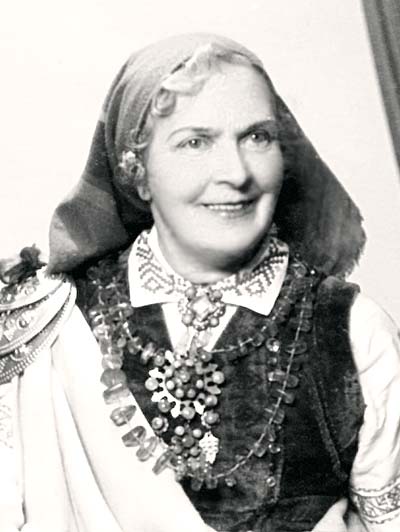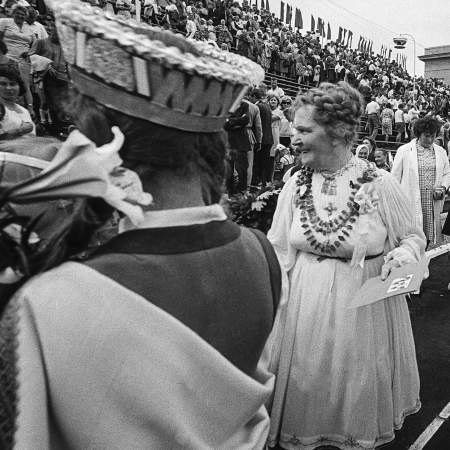Milda Lasmane
1890–1976
Choreographer, educator, Latvian dance master
Born 19 August 1890 at the Upītes farmstead, Plātere Parish, Rīga District. Graduated from the Natālija Draudziņa High School, Educational theory class (1909).
In 1910, went to work in Moscow, where also improved her knowledge in various dance studios. After World War I, returned to Rīga (1920) and worked at the Lithuanian elementary school. Studied at the Latvian Conservatoire (1922–1923) and at the Beatrice Vīgnere School of Plastic Dance (1923–1927).
Her next career steps were in theatre as a dance and movement instructor for National Theatre, Russian Drama Theatre and the Zemnieki (Farmers’) Drama Theatre productions (1930–1940). In parallel, she formed a unified dance group for dance choreography performances at mass events, for example, directing a group of 1 600 dancers at the Mazpulki (rural youth organisation) Festival in Rīga (1930). From 1945, worked as a senior Pioneer (Soviet young people’s organisation) leader and dance methodology educator, teaching Latvian folk dances at Rīga’s Choreography secondary school (1953–1956).
Has also been involved in the collecting and publication of methodological material, compiling several collections of dances and dancing games, including Latvian Folk Dances (1962), which for more than a quarter of a century was the only guide to folk dancing. Composer of more than 100 Latvian dances, dancing games and ballroom dances, as well as a researcher into national cultural heritage. She collected folkloric materials with great respect and love – descriptions of dances, dancing games, customs and narrators’ tales. “Was the new-dance creation process totally positive? Probably not, because, over time, both ethno-choreologist Harijs Sūna and dance educator Milda Lasmane were critical of the new-dance process, which had led dancers away from folk dancing. Oh, those beautiful words ‘new creation’ exclaimed Milda Lasmane and sadly concluded that although choreographers do create new dances, they had forgotten about folk dancing.” (Spīčs, Ernests. Growing from root to tree top – is what Dancis does folk dancing? Tvnet.lv. 21 April 2016)
A Chief choreographer at the 1st-6th Dance Celebrations, Honorary Chief choreographer at the 4th-6th Dance Celebrations, a Chief choreographer at the 2nd and 3rd Latvian Schools’ Song and Dance Celebration.
Awarded the Order of the Three Stars (1934), Latvian SSR Order of Honour for Cultural activities (1955).





